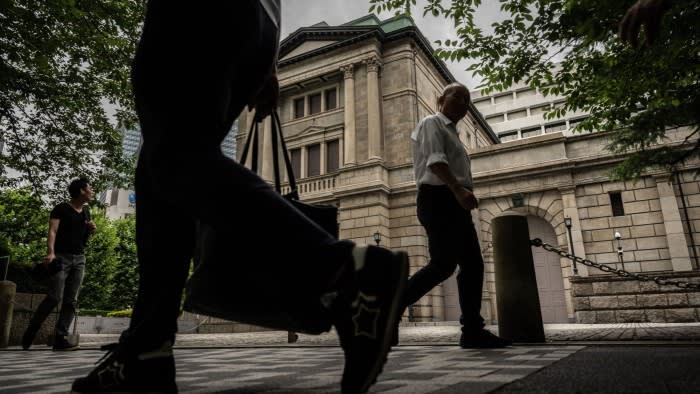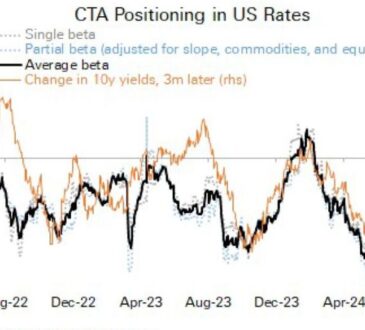
Unlock the Editor’s Digest for free
Roula Khalaf, Editor of the FT, selects her favourite stories in this weekly newsletter.
The global unwinding of the world’s biggest “carry trade” has the potential to destabilise markets further, analysts have said, as the resurgent Japanese currency forces speculators to shut down bets running to hundreds of billions of dollars.
Over the past three years, the yen version of the carry trade — borrowing in a low-interest-rate country to fund investment in assets elsewhere that offer higher returns — has exploded because of Japan’s ultra-low rates.
A stronger yen, buoyed by last week’s Bank of Japan interest rate rise, has forced hedge funds and other investors to rapidly unwind their carry trades. This has contributed to turbulence in global markets, including a dramatic sell-off on Monday, as investors rushed to dump assets they had purchased by borrowing in yen.
“You can’t unwind the biggest carry trade the world has ever seen without breaking a few heads,” said Kit Juckes, a currency strategist at Société Générale.
By some estimates, the yen carry trade has grown to become one of the biggest ever iterations of the bet, with the cheap fundraising in yen pouring into everything from emerging market currencies such as the Mexican peso to Taiwanese equities, real estate and US tech stocks.

The size of the trade is difficult to estimate, say analysts, due to its scale and use by everyone from hedge funds, through family offices and private capital, to Japanese companies.
While a chunk of the trade involves hedge funds and other short-term investors funding speculative bets with yen borrowing, it also encompasses ordinary Japanese households and companies using domestic funds to invest overseas.
In a call with clients this week, James Malcolm, a global strategist at UBS, estimated the cumulative dollar-yen carry trade size built since 2011 at about $500bn, with about half of that extended during the past two to three years. He said about $200bn of those positions had been ditched over the past few weeks, or about three-quarters of the trades he ultimately expected to be unwound.
A senior Japanese official said: “There was a lot of irrational use of the carry trade over recent years, so it was inevitable that there would be a very big unwinding of that at some stage.”
According to the Bank for International Settlements, cross-border yen borrowing — not all of which is necessarily carry trades — has increased by $742bn since the end of 2021. Cross-border loans originating in Japan hit ¥157tn ($1tn) as of March 2024, up 21 per cent from 2021, according to ING analysts.
However, the recent dynamic was radically altered when the Japanese authorities intervened to strengthen the yen and then, last week, the BoJ hit the market with a surprise interest rate increase and a strong hint that there would be more tightening to come.
Some analysts and traders suspect that the majority of the more speculative bets for which the carry trade was used have now been liquidated. Others believe there could be plenty more liquidation to come as the selling moves from hedge funds to “real money” investors.
“The reality about the yen carry trade is that nobody exactly knows how big it is, or how much has now unwound. But there is certainly a sense at this stage that some of the shakiest yen shorts that were funding speculative trades have been wiped clean,” said Benjamin Shatil, a currency strategist at JPMorgan in Tokyo. The cash-based carry trade, he said, had probably now been reduced from its extreme, “but still has some way to go”.
In a note to investors published after the BoJ’s surprise rate increase, Osamu Takashima, a currency analyst at Citi, predicted that “the current adjustment is only the beginning of the end”, estimating that the yen could hit ¥129 against the dollar by 2026 before hitting ¥116 the year after. It is, at present, touching ¥147.




